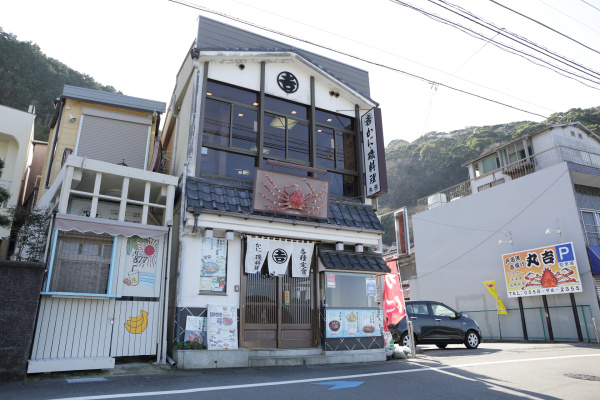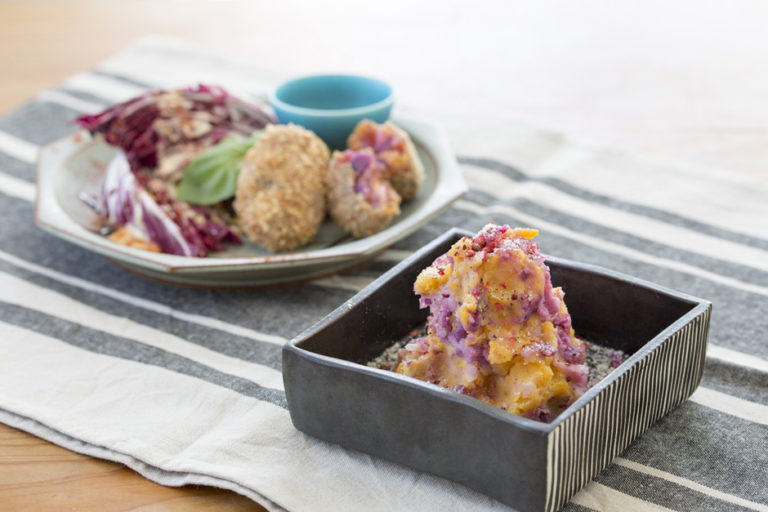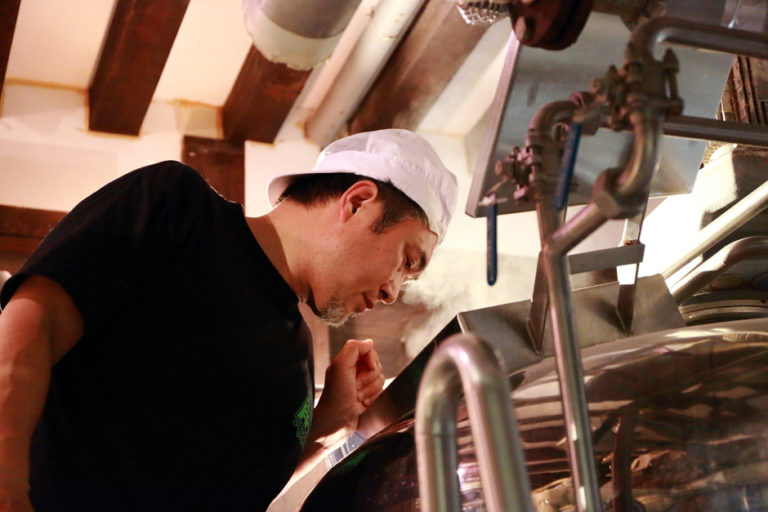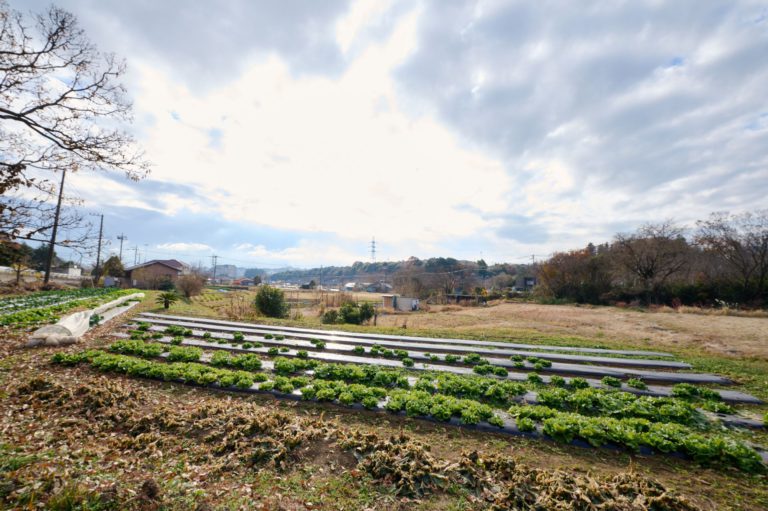Delicacies from Japan’s deepest bay in Heda Spider Crabs and Freshwater Prawns
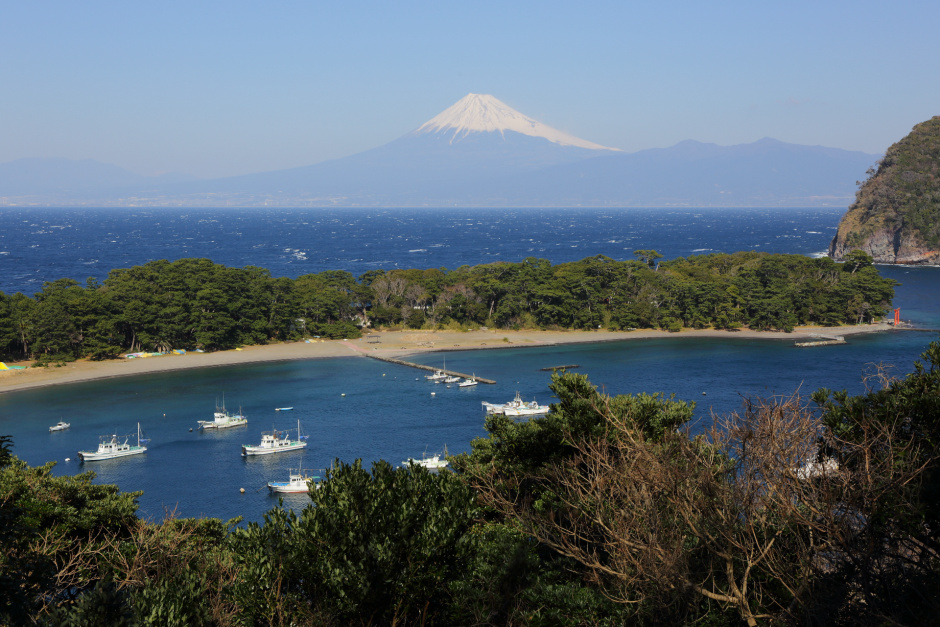
The Suruga Trough, which is the border of the Philippine Sea Plate and the Eurasia plate, can be found within the bay, making it famous for being the deepest bay in Japan, with a depth of 2,500 meters.
Spring water from Mt. Fuji feeds into the deepest bay in Japan
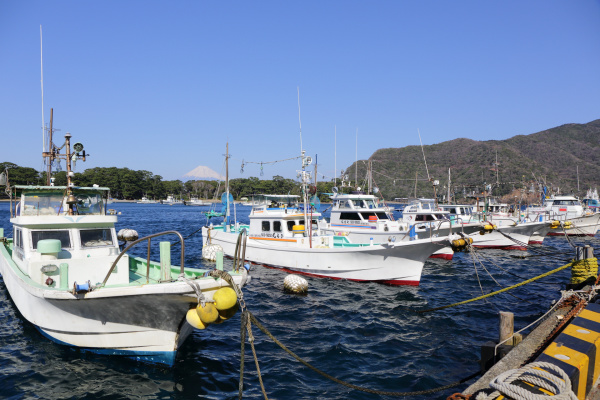
It is said that there is annually 2.5 billion tons of rain/snow that falls on Mt. Fuji. Rain and melted snow are absorbed into the ground and go through underground water veins to become spring water that feeds into Suruga Bay. The bay is home to more than 1,000 species of fish and shellfish, and fishermen from neighboring harbors come to catch mostly sardines, horse mackerel and mackerel, and also Japanese butterfish, Japanese bluefish and flounder.
Another characteristic of Suruga Bay is the three layers of deep-ocean water that compose the deep-sea areas. Deep-ocean water is sea water that is found at a depth deeper than 200 to 300 meters. The water here is rich in nutrients coming from the carcasses of organisms or organic matter sinking from the sea surface. Because it is more than a few hundred meters deep, only a few phytoplankton make use of these nutrients.
Furthermore, unlike the water near the surface, deep-ocean water is not affected by industrial and domestic wastewater, and stays clean. According to information from Shizuoka Prefecture, there is 10 to 100 times less bacteria at this depth compared with the surface.
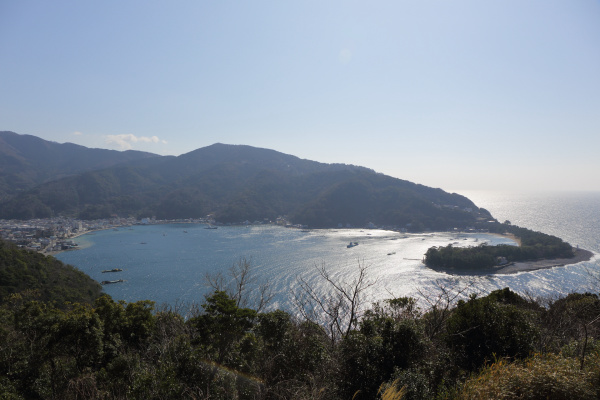
As deep-ocean water does not mix with the seawater on the surface, the temperature stays at 10℃ or lower throughout the year. This is why this seawater layer is said to excel in nutrition, cleanliness and cold-stability. Furthermore, Suruga Bay has three types of deep-ocean water, the Kuroshio Current, the Subarctic Zone, and the Pacific Ocean, which creates a unique environment.
Due to these geological features and water quality, deep-sea fish were often caught in Suruga Bay from olden times. The Heda district in Numazu, Shizuoka Prefecture faces the deep area of the bay, and proclaims it is the “mecca of deep-sea fish.” The Heda fishing harbor is actively attempting to revitalize the town with deep-sea fish cuisine using fishes such as the fire-tailed dottyback, round greeneyes, blackthroat seaperch (nodoguro), and the skilfish. Of these, the freshwater prawn (Japanese lobster) and spider crabs are most prominent in the district.
60 years of chasing freshwater prawn and spider crabs
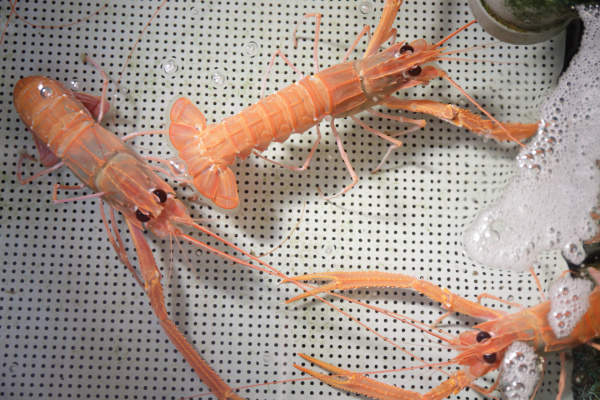
Freshwater prawns are 20 cm-long shrimp which lives in deep sea waters. As its Japanese name tenagaebi implies, it has pincers as long as its body. The meat of this prawn is sweet and soft, and is often eaten as sashimi or grilled with salt. Miso soup made from soup stock using the heads of the prawns offer a rich and fragrant taste.
Spider crabs are the largest crabs in the world. The crabs have a rugged shell and five pairs of thin legs sprouting from the torso, almost like a spider. Larger spider crabs can have a length of approximately four meters with the legs spread out and weigh almost 20 kilograms. These crabs were initially believed not to be good for eating, because of the scarce meat on its large frame. However, after a Heda inn started to offer spider crab dishes in 1960, its popularity skyrocketed, making it one of the seafoods that the area is famous for. Although it looks gangly, its meat offers an intense crab fragrance and sweetness. Locals enjoy the crab by boiling with salt or by steaming.
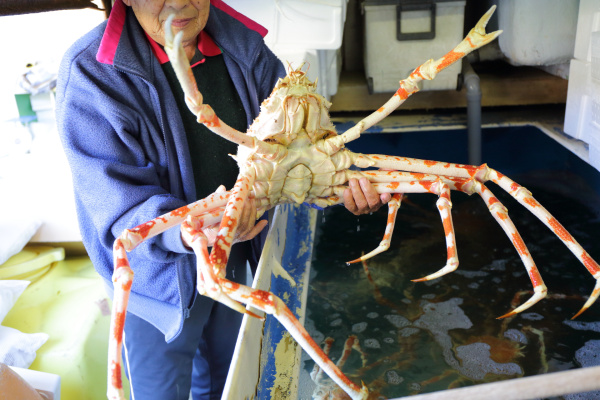
Fishing for freshwater prawns and spider crabs start in mid-September every year. Heda fishermen go out with their boats for trawl fishing once fishing season starts. Trawl fishing is a method that uses a net hung on a rope that extends for 1,500 meters that is dragged on the bottom of the deep sea. The length of the ropes and the weights put on the line differ between each fisherman, as they strive to the utmost with various ingenious techniques until the season ends in May.
Katsumi Yamada runs a seafood processing business called “Yamatake Shoten” and is the captain of the fishing boat “Hinodemaru.” He has been catching freshwater prawns and spider crabs for many years, with a career spanning approximately 60 years. Even now, over 80 years old, he goes to fish with his crew.
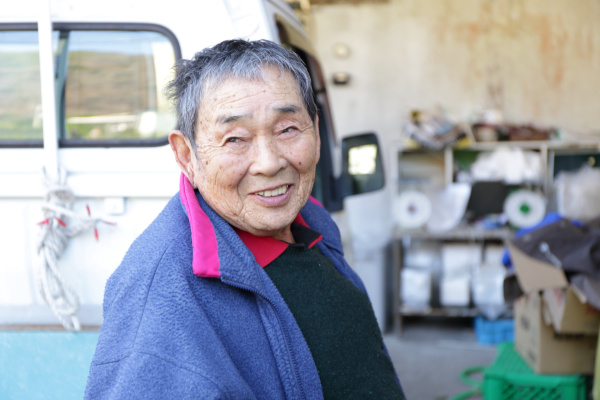
‘We are a fishing family that has continued on for three generations. Catching spider crabs and freshwater prawns became popular in my generation,” says Mr. Yamada. Once fishing season starts, he takes out the boat at three in the morning, going more than two hours each way to the fishing areas. Mr. Yamada says that he decides where to trawl nets according to the season, weather and ocean current lines.
“There are days I catch over 200 spider crabs. Although the amount of crabs and prawns we catch has been decreasing in recent years, there is always round greeneyes or fire-tailed dottybacks in the net. I believe that the blessings of Suruga Bay are still going strong.”
According to a survey conducted by the Shizuoka Ocean Sector Regulation of Fisheries Committee, the haul of spider crabs in recent years have trended up to approximately 20 tons. The crabs command high prices for their rarity in addition to limits to prevent overfishing.
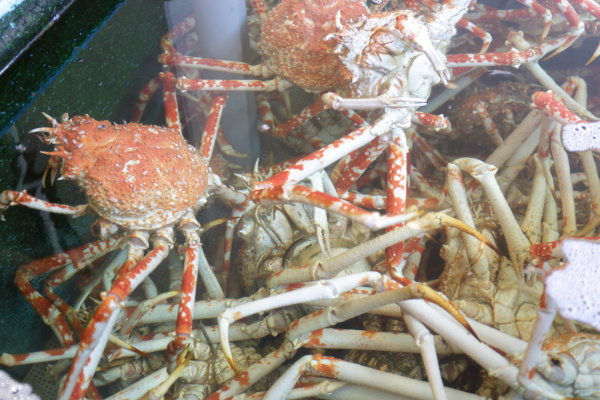
Most of the freshwater prawns and spider crabs caught by Mr. Yamada go to local restaurants and hotels, but sometimes a few can be found at direct sales depots and markets.
“Those found on the market are usually boiled or frozen as fresh seafood can be difficult to get hold of. I recommend thawing frozen seafood in water. Storing it in the refrigerator is fine, as long as you eat it after a couple of days, but it is better frozen if it is going to take longer than that. Spider crabs and freshwater prawns are in-season around February and March,” says Mr. Yamada.
“Whole steamed spider crab” captures the crab’s savory taste
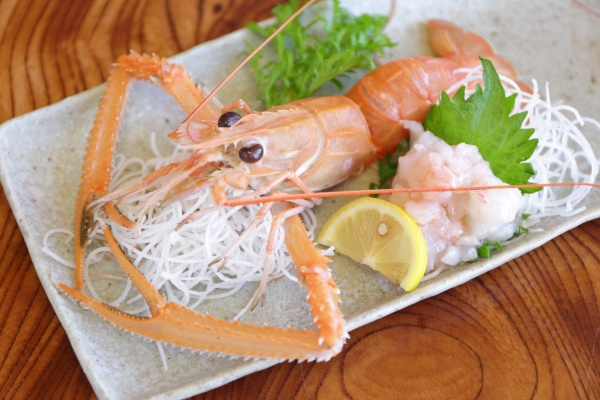
A few minutes stroll away from Yamatake Shoten is Marukichi, a restaurant guesthouse facing Suruga Bay. Guests do not have to stay overnight to dine at the guesthouse, making it busy with tourists during lunchtime.
The restaurant takes pride in its fresh seafood caught in Suruga Bay. The menu features set meals, rice bowls, multi-course dining, and a-la-carte dishes as well. Naturally, dishes featuring deep-sea fishes such as the Western pacific roughy, dory, and greeneyes can also be found here. Although there is so much to choose from, the stars here are without a doubt, the spider crab and freshwater prawn.
“Freshwater prawn is best eaten as sashimi. We keep the prawns in a fish tank, to only be taken out right before eating, so the sashimi is very fresh. We offer the sashimi in a decorative way, and hope customers will also enjoy seeing the beautiful, translucent shell as well,” says the restaurant manager Toshiyuki Nakajima.
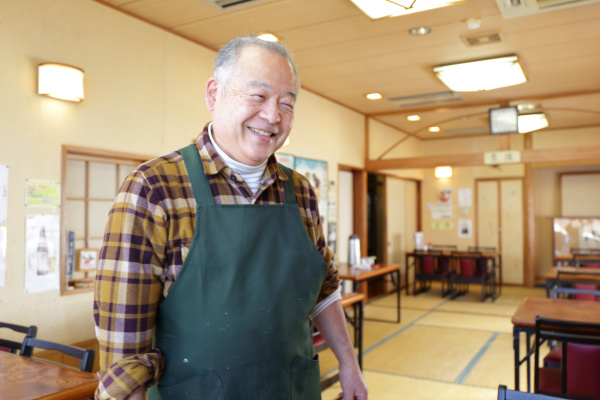
As with freshwater prawns, spider crabs are also kept in fish tanks. Once an order is received, a crab is taken out of the tank with a large net and carried off to the kitchen. According to Mr. Nakajima, the whole steamed spider crab is especially popular with tour groups.
“Boiling a crab causes the flavors and crab butter to flow out, so we steam the crabs for our customers.”
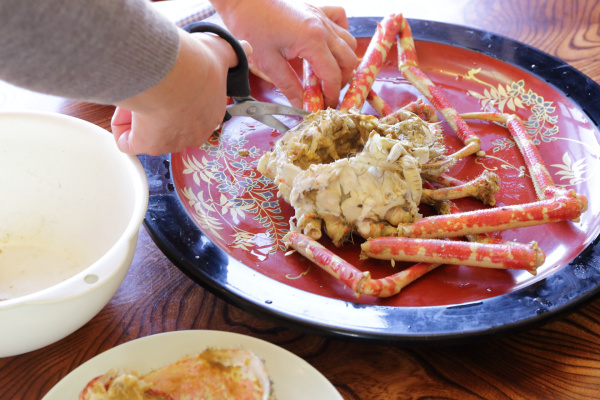
One can enjoy the rich, dense flavor of crab by tasting the meat of the legs, which have been carefully steamed to perfection. Opening the shell will reveal an ample amount of crab butter. Dipping the leg meat into this crab butter is the best way to enjoy spider crabs, according to Marukichi. “It’s almost a crab butter fondue,” states Mr. Nakajima.
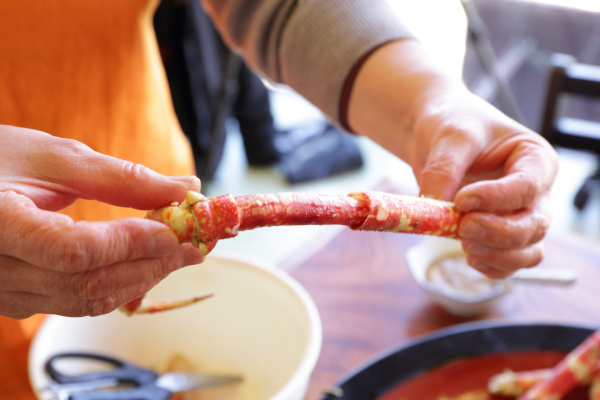
Suruga Bay is full of nature’s blessings and boasts a rich ecosystem. Why not visit Heda and enjoy the culinary delights at Japan’s deepest bay, which is a mecca for deep-sea fish?
tenagaebi (freshwater prawn)
Source:Katsumi Yamada (Hinodemaru) and Toshiyuki Nakajima (Marukichi)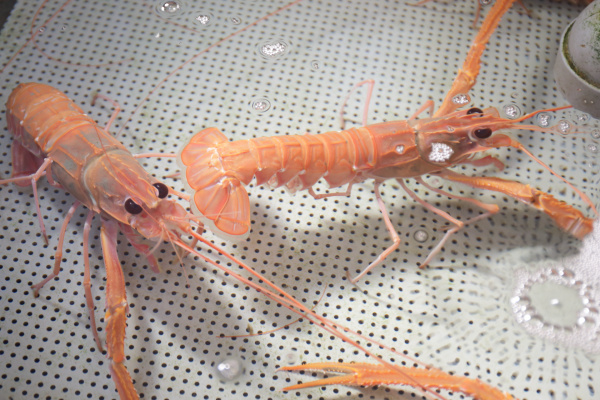
Peak Season
Around February – March
How to enjoy them
As sashimi or grilled with salt. Use the head in soup stock for miso soup.
spider crabs
Source:Katsumi Yamada (Hinodemaru) and Toshiyuki Nakajima (Marukichi)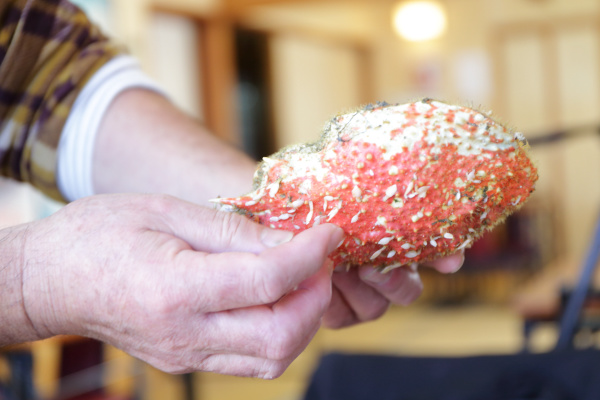
Peak Season
Around the end of January – end of March
Tips
甲羅に米粒のような貝がついているもの
How to enjoy them
Steam it whole, and dip the crab’s leg meat in crab butter


